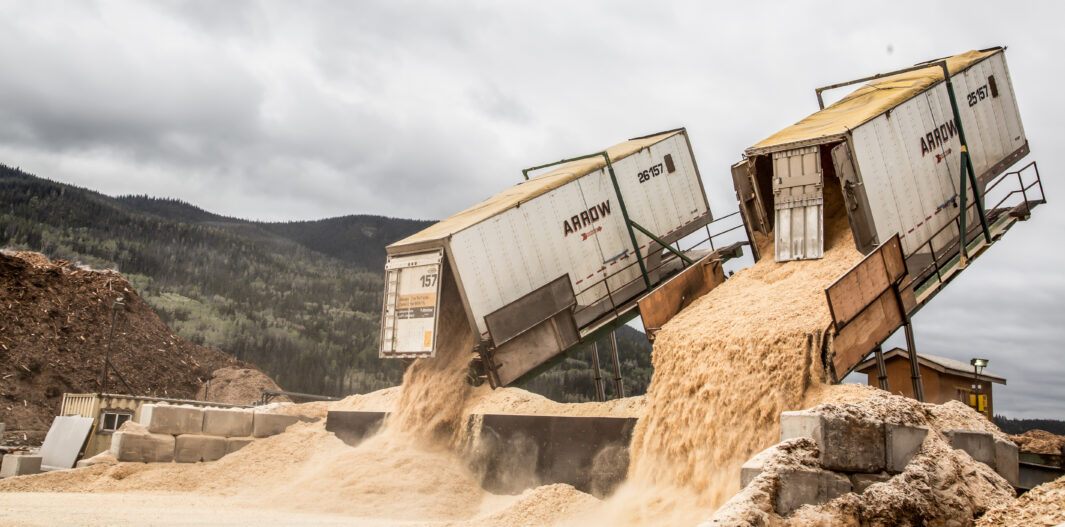At the Wood Pellet Association of Canada we are constantly seeking ways to be ahead of the curve. That’s why we expend a significant amount of our time building partnerships that leverage our collective strengths and collaborate on R&D to position our sector for long-term success.
We’ve been fortunate over the years to have strategic and mutually beneficial partnerships across the country, as well as support from provincial and federal governments for our research and development activities.
In 2023, we spent considerable effort to develop proposals that will enhance our reputation as a reliable and responsible supplier of wood pellets both globally and domestically. I’m proud to say that because of this work, we are advancing five major research and development projects in 2024.
1. Enhancing Traceability
Increasingly, global markets and governments are asking for further proof that the products they purchase come from well-managed forests. The European Union Deforestation Regulation (EUDR) will require new approaches to traceability including geolocation. In the Canadian context this may be impractical and therefore a market barrier for our products. As such, approaches to traceability will need to be tailored to address some of Canada’s unique attributes: vast forests, species and its public land model, and that the fibre from pellets can come many different areas and suppliers.
With funding from Natural Resources Canada’s Forest Innovation Program, WPAC will work with its members to investigate and test potential and practical approaches to traceability including geolocation and develop tools and systems for reporting on traceability to demonstrate compliance with emerging regulations such as the EUDR. We will also work with the Sustainable Biomass Program to test the feasibility of linking our traceability approach with their data transfer systems.
2. Exploring New Biomass Pathways
As with the rest of Canada, Ontario’s wood pellet sector has grown by using sawmill residues. In the future, there will be an increasing reliance on forest biomass in the form of left-over tree-tops, branches, low quality logs and fire-damaged timber which is often contaminated with rocks and sand which creates wear and tear on mill equipment and increases safety hazards.
With funding from Ontario’s Ministry of Natural Resources and Forestry, we have partnered up with BioPower Sustainable Energy Corp which owns and operates a wood pellet plant in Atikokan, Ontario. Key activities include an economic analysis of using a combination of an in-woods portable chipper and triple deck screening plant to produce wood chips as pellet feedstock as well as testing feedstock samples for contaminants and testing finished pellets against the CAN/CSA-ISO 17225-2 pellet standards.
If successful, we will be able to increase utilization of forest biofibre, create new revenue streams for companies, encourage Indigenous participation in the sector, and reduce forest waste and fire hazards.
3. Agri-Pellet Production Potential
With funding from BioFuelNet Canada which manages the Biomass Canada Cluster, WPAC is partnering with The University of British Columbia’s Biomass and Bioenergy Research Group (BBRG) to undertake a multi-year study to determine strategic locations and capacity of agri-pellet production facilities.
The cluster is focussed on de-risking and commoditizing agricultural biomass using complete value chains for rural and remote applications, using emerging technologies that improve the profitability of production, pre-processing, handling and storage.
This work will be led by Dr. Shahab Sokhansanj at UBC. He and his team will:
- Calculate the number and sizes of potential farm- based agri-pellet plants and their geographical coordinates.
- Quantify cumulative GHG reduction for fuel switching to agri-pellets and calculate the savings in BECCS (bioenergy with carbon capture and storage) for electricity generation at later years.
- Evaluate the investment criteria to identify the biomass development opportunity zones.
4. Consistent & Technically Sound Standards
With support from the Global Forest Leadership Program, International Standards Organization, and approval from the Standards Council of Canada, WPAC will represent Canadian wood pellet interests on ISO Technical Committee 238. Through this support we will assist in the drafting, reviewing, and commenting on solid biofuel standards as well as participating in international laboratory testing. Our key goals in this project are to:
- Standardize terminology, specifications and classes, quality assurance, sampling and sample preparation and test methods of wood pellets.
- Establish internationally recognized safety standards for wood pellets.
- Establish testing standards for internationally accredited testing facilities for physical and mechanical testing methods of wood pellets.
In turn, we are optimistic we will have internationally recognized standards that allow for safer international trade of wood pellets including handling, transportation and storage with all accredited testing facilities use the same standard to ensure consistency.
5. Reducing GHGs and Enabling a Net Negative Future
Often harvest residues are contaminated with sand, gravel and tramp metals; content of ash is high, moisture content is variable, and heterogenous lignin content between solid wood and bark is problematic.
To address this issue, WPAC and UBC’s BBRG have applied for funding to examine the potential to increase the use of forest and harvest residuals using near-infrared radiation (NIR) spectroscopy. This technology can be used to predict the chemical composition, density, structural change, and morphological characteristics of lignocellulosic biomass. Our goal is to develop a blend that produces durable pellets and meet the specification of graded wood pellets for commercial, residential, and industrial applications as listed in ISO standard 17225-2.
The study will take place at BBRG’s lab as well as at Premium Pellet in BC, Shaw Renewables in Nova Scotia and BioPower Sustainable Energy Corp in Ontario.
A Better Future for All
In closing, I want to acknowledge the tireless effort and vision of my colleague Dr. Fahimeh Yazdan Panah, Director of Research and Technical Development. On behalf of WPAC and all our members, she has led the development of these proposals alongside partners nationally and internationally. I also want to recognize the support of our funding partners who share our vision that investments in R&D are critical not only to the long-term success of our sector but hold the key to unlocking a world of possibilities and a better future for all.

